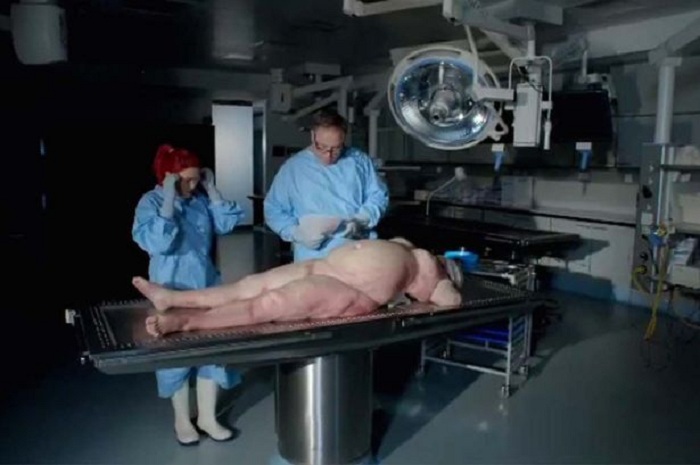However BBC documentary team filmed a doctor cutting open a 17 stone woman who had donated her body to medical science and found her body was jam packed with killer fat.
The stomach churning scenes show a thick layer of buttery coloured fat just under the skin which was described by one of the medical team as feeling "greasy".
And elsewhere in the cadaver organs were swamped with more layers of the brightly covered gunk.
The scenes are likely to have anyone thinking of having a fry-up for breakfast opting for a bowl of muesli.
When doctors examined the heart they found it was nearly twice the size it should have been and was flabby and bag-like rather than the tight firm muscle you might find inside an fit person.
The lungs where drenched in with liquid - indicating an on going heart problem - and which would have had the living person wheezing up flights of stairs with the sensation of drowning as they struggled to clear their lungs.
The body used in the show was of a woman in her early 60s who when she died of heart failure was 17 stone despite being just 5ft 5in.
Classed as clinically obese she came from Long Beach in California and donated her body to scientific research.
After having her left arm removed for cremation and ashes returned to family she was shipped to the OK for disection.
Medical staff were told she had suffered heart disease, minor surgery but only had a minimal alcohol intake.
Here is what they found and what it means with a commentary from obesity scientist Dr Giles Yeo from the University of Cambridge.
Skin
Carla Valentine, technical curator of the museum of pathology at Queen Mary University noted fat distributed mainly around the belly.
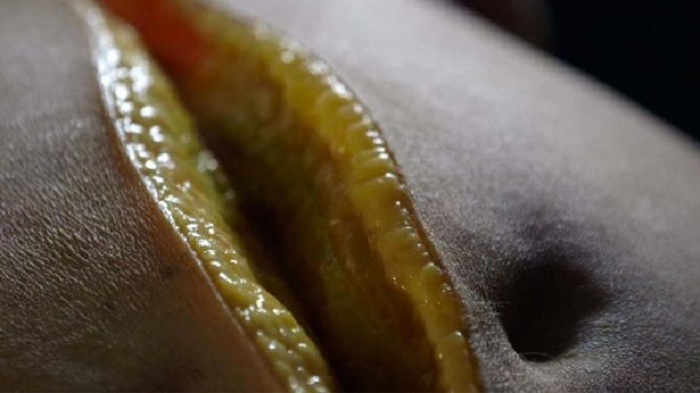
As she cut into the body she unearthed a thick layer of greasy fat that "felt like butter with a mesh going through it".
She said: "I needed a lot more strength to cut through the tissue which kind of bloomed out in neon yellow.
"It made me aware of the fat on my own body and the effect it has."
Inside she noted fat around organs in abdominal area as well as two breast implants.
Dr Yeo said: "Fat is not in itself bad for you - it is a professional energy storage system and offers cushioning.
"The problem comes when the storage is full and the extra fat looks for somewhere else to go and that is where the damage is caused.
"The amount of fat you can see tells you how likely the fat is to be doing damage elsewhere."
Heart
The team then removed the heart and cut slices of it to show in just how poor condition it was.
Dr Mike Osborn, the pathologist, says: "The heart feels baggy, when you pick up the heart of someone fit it would be tight and hard like picking up a piece of steak, this is like more like a bag.
"At 449 grams, it`s a heavy heart, despite her weight this woman is quite a petite person and should have a heart of 225grams so this is much heavier.
"This is sort of heart you would expect in someone who has heart failure due to high blood pressure.
"The heart has to pump to keep up the pressure but there comes a point when the heart can`t get any bigger and it exhausts itself.
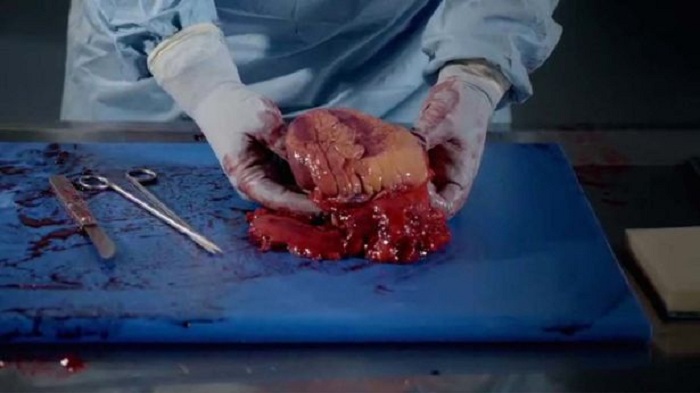
"If you are a 6ft 8in All Black Second Row or a professional footballer running round the pitch you need a lot of blood so the wall of the left ventricle will be an inch thick of muscle all the way around.
"But look at this lady, her left ventricle is very thin - 8mm - that is because she had high blood pressure and the heart can`t keep it up so it gets thinner and thinner.
"This heart has gone from a thick muscle to a paper bag that is not able to pump blood around the body."
Dr Yeo said: "Think about your body as having an odometer and a rev counter - we have a certain number of miles we can get to and a certain amount of revs we can run at.
"And you can imagine if something happens to your body, like your arteries begin to harden because of fatty deposits, your heart has to beat harder to circulate blood and the balance between the odometer and rev counter is off.
"The heart beats harder and harder and the heart can be damaged and that is the problem with high blood pressure.
"The same is true for every part of your body, you can`t force organs to work too hard."
Liver
The team discovered a fatty liver associated with obesity however they were keen to point out that fat is normal and is used to store energy and cushion organs.
Describing it Dr Osborn said: "The first thing I saw in the liver marked `fatty change`.
"It was pinky, soft, like pate. A normal liver is quite soft but not as soft and is much more meaty - the pink int his liver is the fat.
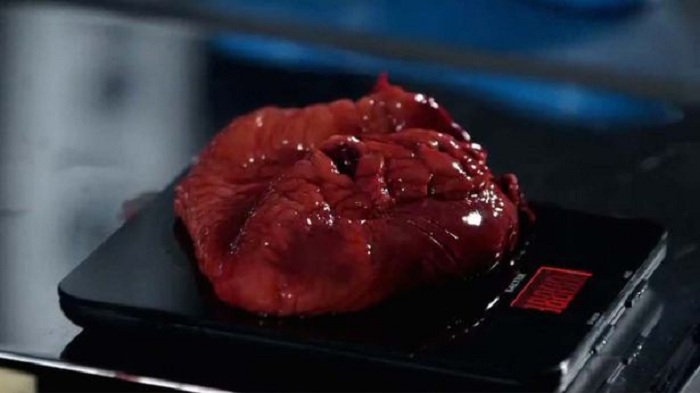
"The most common cause is alcohol related but we known this lady drank virtually nothing so it`s almost certainly obesity.
"Fatty damage can lead to cirrhosis and cancer but even people who do not develop those can have liver failure."
Dr Yeo said: "Your liver`s job is to detoxify you.
"If you stuff it full of fat so it like Foie Gras it is like pouring liquid fat down a plug hole which hardens and then blocks it, it stops being a good place to filter.
"That`s why with alcoholics they turn yellow when their liver fails, it means the toxins are still inside.
"Liver failure is basically poisoning and if your liver is fatty you risk poisoning yourself.
"If you go out and eat a high fat meal you`ll be fine, if you do it two days running you`ll be fine, if you eat high fat for two weeks over Christmas your get high fat content liver.
"You will recover though if you stop, however if you continue to abuse your liver at some point you`ll permanent damage."
Lungs
Once removed the BBC team found fluid dripping from lung - a sign of pulmonary edema because of heart failure.
Dr Osborn said: "This would have given a sensation of drowning.
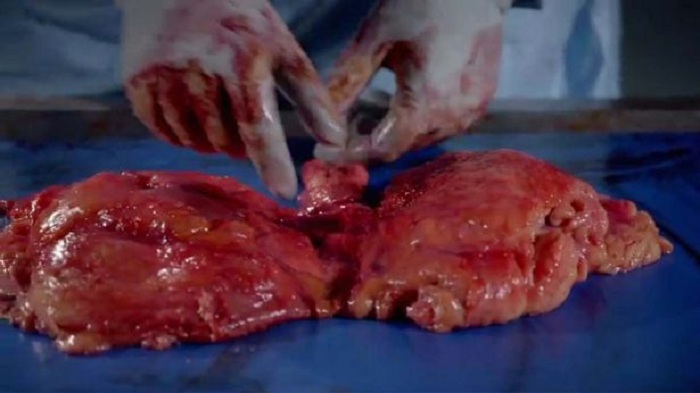
"People with this condition tend to need support for example if someone tells you they have sleep sitting up or with eight pillows that is very indicative of heart failure.
"Heart failure is different to a heart attack, when it fails it doesn`t fail straight away, it fails over time so symptoms are gradual.
"This lady might have been able to walk up 10 flights of stairs three years ago then only five flights and then struggle up one flight of stairs, it was a progressive disease as the heart became worse and worse."
Dr Yeo said: "If you are not getting enough oxygen in you are going struggle to breathe and get out of breath.
"If the heart is failing you`ll have excess liquid in your body and this will end up in the lungs if it backs up."
Kidneys
Examining the kidney area Carla said: "You should be able to see the kidneys and they should have a little bit of fat around them like an edamame bean that you pop out but these had very large fat capsules and lots of extra fat."
The team believed in a thin person there would be half or third less fat.
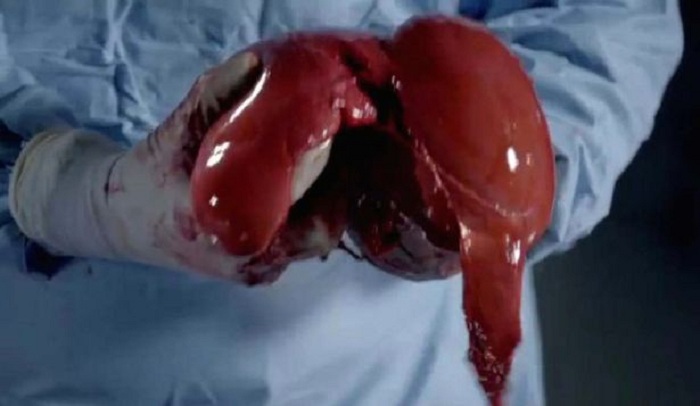
Dr Osborn said: "The surface should be smooth but there was some scaring on the surface and indentation and pock marking."
Dr Yeo said: "The kidney is another detoxifying organ and it filters your urine.
"If you are obese some fat will end up in your kidneys and they will have to work harder.
"If you begin to tip into type-2 diabetes then you will get sugar in your urine because you are unable to deal with glucose.
"The kidney then has to filter all this sugar that your body can`t cope with and it will fail."








